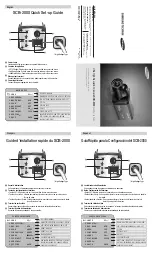
www.vareximaging.com
39
1313DXT-I/1515DXT-I/2520DX-I/3030DX-I X-ray Detectors
U
SER
M
ANUAL
This range ensures that gain calibration meets both the upper and lower dose requirements
under all modes of operation. The generator X-ray source settings determine the dose
requirement.
To reduce the effects of noise, the average of each pixel in the flat field image is calculated by
accumulating a number of frames into an internal memory buffer, then dividing the sum of each
pixel by the number of frames acquired.
The number of calibration frames used during gain and offset calibrations can be adjusted under
the Mode Settings drop-down.
Caution
Gain calibration requires the production of X-rays. Certain precautions
must be taken by the human operator.
Note
Using larger numbers of calibration frames to capture the flat field image
will result in more accurate calibration.
Note
Accumulate a minimum of 32 frames for gain calibration and eight frames
for offset calibration for optimal image quality.
Note
Only the systems integrator determines the actual number of calibration
frames used, depending upon specific performance requirements.
Note
Operate the detector(s) for a minimum of at least 1 hour (60 minutes) prior to
gain calibration. Once this happens, the software performs a new offset
calibration.
Table 22
Gain Calibration Sequence
X-ray radiation
A uniform flat field with no obstructions in the path of the X-ray beam.
The radiation should ideally be at a level and technique representative
of the typical radiation dose for the detector during typical procedures,
keeping in mind the general consideration outlined above.
Offset calibration
Note:
X-rays must not be used for this part of the calibration.
Software performs a new offset calibration referred to as dark field
acquisition.
Repeat
The preceding steps must be repeated for each of the stored imaging
modes.
















































